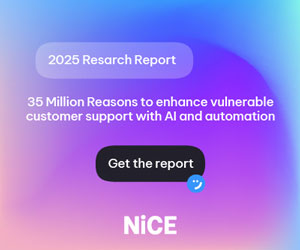I have led hundreds of successful Customer Experience (CX) program successes. I have also led a couple that failed. What’s the difference between the successes and the failures? A few things, but one of the most significant is the way an organization’s culture is centered.
Organizations fail to improve their CX when they lack customer-centricity. Customer-centricity requires you to put the Customer at the center of everything you do. This concept is difficult for many organizations. They are focused on sales or margins or operational efficiency, and, to be fair, these areas are crucial to any business.
However, putting the customer at the centre of everything you do doesn’t have to conflict with sales, margins or operational efficiency. In fact, customer-centricity will result in improvements to these areas.
Most organizations assume that a bad CX is the problem they need to fix. However, a poor CX is a symptom of the real problem, not the problem itself. The real problem is that an organization does not put the customer at the centre of everything they do.
A company that creates a CX Team and undertakes customer research, journey mapping, and everything involved with improving CX without addressing their customer-centricity will fail because they tackle only the symptom, not the cause.
The fact is any change in CX must address the customer-centricity of the organization to affect change.
How Is Your Organization Focused?
In our global Customer Experience Consultancy, we train our clients to assess how customer-centric they are. We use 269 questions in total, which include the following:
- What is the definition of the type of Customer Experience you want to deliver?
- Do you have a person or team of people responsible for managing the Customer Experience for your organization? Why or why not?
- Where does your experience stop? Where does it start?
- What emotions does your current experience evoke from your Customers?
- How involved is senior management in your Customer Experience details?
- How do you measure the success of your Customer Experience?
- How often do you listen to what Customers have to say about your organization?
The answers to these questions (and 260 more like them) reveal how customer-centric you are.
Sometimes, the fact that you have answers to them determines your customer-centricity, because, the truth is, some organizations don’t have answers. However, the most customer-centric teams not only have answers but also have entirely different responses than most.
We have a model we use that represents categories for the varying levels of customer centricity. We call it “Naïve to Natural”.
Four categories represent different levels of Customer-Centricity
Naïve – Are the least focused on customers, with experiences designed for the organization’s benefit.
Transactional – Believe that the customer is important, just not as important as the organization is. (Most organizations are Transactional.)
Enlightened – Organizations recognize the significance of customer emotions evoked by their experience, and although they may not have achieved much difference from a Transactional company’s experience yet, the mindset is different.
Natural – The smallest group, put the customer at the center of everything they do and customer-centricity runs in the DNA of the organization.
Even the Most Natural Aren’t Always Natural Everywhere
Customer-centricity is not a constant for any organization, from the most Naïve to the most Natural. A stable way to build a strategy for where you want to go is to know where you are. (We have an online assessment that can help you get started.)
Many factors are working together to determine whether an organization is or isn’t customer-centric. These include nine orientation areas influence customer-centricity, noted below:
- People
- Customer Strategy
- Systems
- Measurement
- Channel Approach
- Expectations
- Marketing & Brand
- Process
- Culture Leadership
Each of these orientations refers to how the specific area scores on the Naïve to Natural model toward customer-centricity.
Each area can have a different customer-centricity level. For example, you might have great People that score as Enlightened on the model, but a Customer Strategy that scores as Naïve.
Typically, when we reveal the results of this process for scoring on the orientation areas to our clients, they are surprised. By examining the nine different areas, you determine how customer-centric you are in each and, perhaps more importantly, what areas need more work than others.
Look closely at your organization’s orientation and the nine areas that influence the Customer Experience. Determine where you are in relation to where you want to be. Have the “Aha!” moment and then create your organization’s plan for improvement. You deliver the experience you do today because of the way your organization is.
If you are process, or operations, based, then guess what? You’ll provide a process, or operations, based experience. If you consider customers transactions, then guess what? Your experience will feel transactional. But if you put the customer at the center of everything you do, then guess what? You will deliver a Customer Experience that feels natural and brings them back for more. Are you Natural or Naïve?
Author: Guest Author
Published On: 16th Nov 2017 - Last modified: 4th May 2018
Read more about - Archived Content







